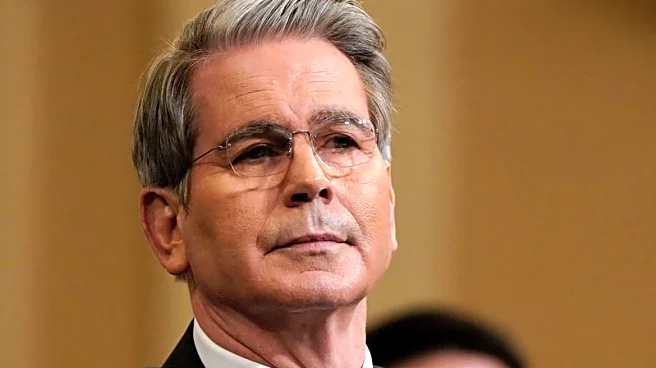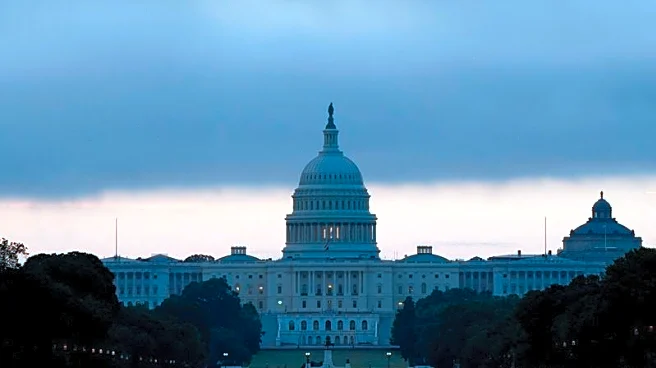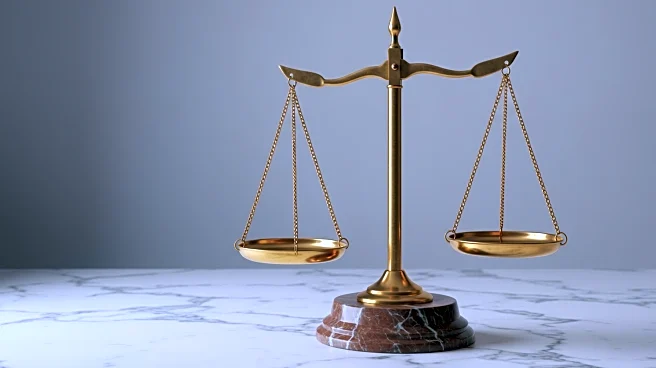What's Happening?
The United States is on the brink of a significant financial crisis as the national debt approaches $40 trillion. This situation is exacerbated by the need to refinance nearly $18 trillion of this debt over the next two years at much higher interest rates than in previous years. The U.S. Treasury is tasked with managing this massive refinancing in a market where borrowing costs have surged. Interest payments on the national debt have already increased by 34% last year, surpassing spending on both the military and Medicare. The recent increase in the debt ceiling by $5 trillion, supported by President Trump, has temporarily averted a government shutdown but has also led to a downgrade in the U.S. credit rating by Moody's.
Why It's Important?
The rising national debt and the associated refinancing challenges pose a direct threat to the U.S. economy. Higher interest rates on government borrowing translate into increased costs for mortgages, business loans, and credit cards, affecting everyday Americans by reducing disposable income and slowing economic growth. The situation could lead to a liquidity crunch, potentially causing market volatility similar to the 1987 stock market crash. The long-term economic outlook is concerning, with potential GDP shrinkage, job losses, and reduced private investment. This financial strain could impact retirement savings and increase market volatility, affecting portfolios tied to stocks and bonds.
What's Next?
The U.S. Treasury will need to navigate the refinancing of a substantial portion of the national debt in a challenging interest rate environment. Financial leaders warn that bond markets may demand even higher rates to absorb this debt, increasing the financial burden. The government may need to implement fiscal discipline to manage the debt effectively and avoid further economic instability. Stakeholders, including policymakers and financial institutions, will likely focus on strategies to mitigate the impact of rising borrowing costs and ensure economic stability.
Beyond the Headlines
The current debt situation raises ethical and policy questions about fiscal responsibility and the long-term sustainability of government spending. The reliance on increasing the debt ceiling as a temporary solution highlights the need for comprehensive fiscal reforms. The potential for a 'debt death spiral,' where rising rates and mounting debt exacerbate each other, underscores the urgency of addressing these issues to protect the economic future of American families.













